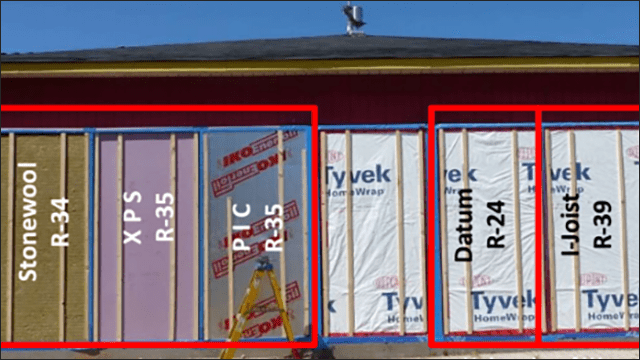This study compares the hygrothermal performance of conventional 38 x 140 mm framing with exterior insulation with three types of deep cavity framing — double stud, I-Joist stud or 38 x 184 mm wood framing. The wall assemblies had an average installed thermal resistance of RSI 6.8 and were installed with both north- and south-facing orientations to observe their relative performance.
The hygrothermal conditions of each wall including relative humidity, moisture content, temperature and heat flux were monitored under typical indoor conditions and climatic exposure. In addition, each wall was subjected to a simulated air leakage test performed during the winter. The moisture content of the oriented strand board sheathing and framing plates were measured via electric moisture sensors installed in the main wall cavity and used as the main durability performance indicator. This paper presents the design, construction, and instrumentation of the study as well as condensation, mold, and decay risk analysis. The project was part of the NSERC strategic research Network for Engineered Wood-based Buildings Systems (NEWBuildS).
Note: This paper was presented at the 14th Canadian Conference on Building Science and Technology. It is copyrighted by the authors and is published with permission.
